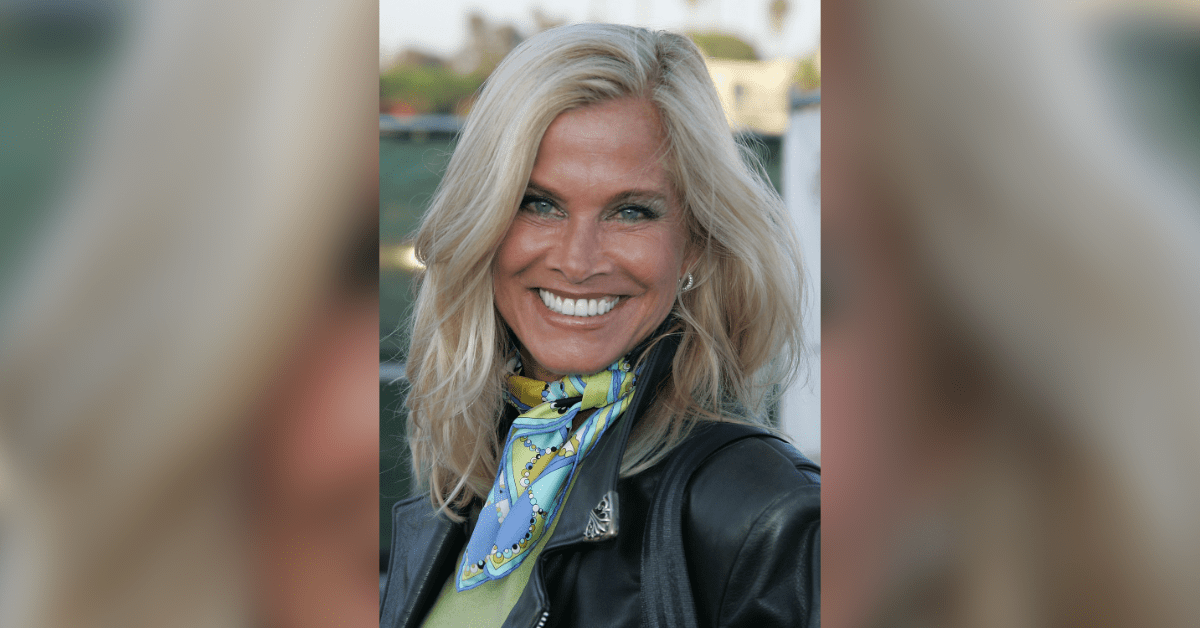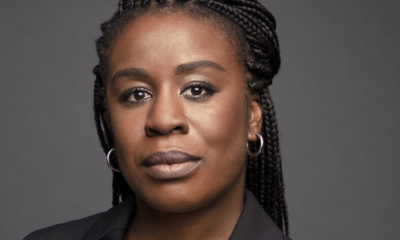Entertainment
Bollywood in Brownsville: Fundraiser to benefit Ozanam Center – MyRGV

Bollywood in Brownsville, coming April 19, has a dual purpose in mind: help out the Ozanam Center while giving ticket buyers a rare taste of India’s lively, vibrant culture and cuisine.
The fundraiser is the brainchild of District 2 City Commissioner Linda Macias, whose district includes the Ozanam Center, a nonprofit homeless shelter that in recent times has had an extra burden placed on it in the form of large numbers of migrants waiting to be transported out of Brownsville. Touring the facility during Thanksgiving week last year, Macias saw up close what went on, met staff and clients, and learned about the tremendous financial pressure the center is under.
Ozanam normally serves clients such as women and men seeking escape from domestic violence, people with addiction problems, young adults who have aged out of the foster care system, and individuals incapable of maintaining a household for whatever reason. On top of that the center, which has been in existence 30 years, now has a sizable migrant population it is trying to accommodate.
Macias said the facility’s capacity is 300 people per day, but that it has been allowing more than 380 to stay because they don’t want to turn anyone away.
She also learned during her tour that Ozanam had not held a fundraiser since before COVID, and in the last 16 years had never raised more than $5,000 from any one fundraiser. Macias said she felt a responsibility to help the center since, for one, it’s in her district. Plus, the city relies heavily on Ozanam to house migrants who would otherwise be on the streets while waiting to be transported out of Brownsville.
“I couldn’t walk away and not do something about it,” she said.
Macias, who visited India with her husband in 2018, came up the idea for Bollywood in Brownsville. She called former city commissioner and Ozanam board chairman Ben Neece to tell him. A devoted fan of Indian food and culture, Neece was excited about the idea and contacted the India Association of the Rio Grande Valley, or IARGV, that same day to see if they could help, Macias said. The organization, based in McAllen, jumped at the chance.
Macias said she’s sorry Neece, who died unexpectedly Dec. 12, won’t be around for the fundraiser and thinks he would have loved it. The event is being held in his honor, she said.
Bollywood in Brownsville will be catered by Chef Celia Galindo, who has cooked for Indian and Pakistani private parties in the Valley, Macias said, noting that Galindo has also teamed up with the IARGV to make the event as authentic and genuine as possible.
“We have a lot of prominent and connected cultures within our community,” Macias said. “The Filipino Association is one that’s very strong here.”
The Pakistani and Indian communities likewise have a robust presence in the Valley, contributing much to economic development, she said.
“There’s about 80 to 90 families across the RGV,” Macias said. “The majority of them are in Brownsville and then the rest you can find in Hidalgo County. It’s very strong.”
Bollywood in Brownsville starts at 6:30 p.m. on April 19 at the Brownsville Events Center, 1 Event Center Blvd. Formal, festive attire is encouraged. Tickets are $100 each and include a three-course Indian meal, wine and entertainment compliments of the IARGV. Tickets are available only at Camelia Mexican Boutique, 1424 W. Price Rd., from 10 a.m. to 6 p.m. Tuesday through Friday.
Contact Us
Entertainment
Sustainable fabrics can help fashion rid itself of a waste problem. – The Washington Post

Every year Aarav Chavda goes scuba diving in the same Florida reefs. A former McKinsey analyst and mechanical engineer, Chavda has watched the corals blanch white over time, and he has noticed species dwindle— except the lionfish.
Local and federal officials near Atlantic and Caribbean waters have tried a number of methods to eradicate the lionfish, a gorgeously striped and spiny invasive species that has no predators in the region and eats many other fish. Chavda had a new idea: Make it fashion. Along with two other avid divers, Chavda founded a startup called Inversa and invented a process that transforms lionfish skin into a supple, attractive leather. Next, they added two other invasive species— Burmese pythons from the Florida Everglades and carp from the Mississippi River. They’ve achieved some real success: a number of brands, including Piper and Skye and Rex Shoes, have used their leathers for wallets, footballs, flip-flops, and a cool-looking python dagger and sheath.
The toxic impact of the fashion industry – meaning not high fashion brands, but the companies that make the materials that form our clothes, as well as the companies constructing the clothes – is well-known. Up to 4 percent of global climate emissions, according to a McKinsey report, and an unknown but substantial percent of global water pollution also derive from it. This is a baffling, often overwhelming problem. Humans require clothing to survive – plus, we love our clothes and derive deep meaning from how we present ourselves to the world.
“It’s two sides of the coin,” says Monica Buchan-Ng, a sustainability expert at the London College of Fashion’s Centre for Sustainable Fashion. “[Clothes] can be this incredible creative force of self-expression and identity. But also we know that the way the fashion system works at present, it’s just destruction after destruction.”
However, the sheer reach of the industry also makes it a tremendous potential tool for innovation and change, and a number of new fabrics are a crucial part of that change. So far, Chavda says, Inversa has removed 50,000 lionfish, burmese pythons, and carp. In a few years, he hopes to be removing tens of millions. “I’m bullish,” Chavda says, “because I think the consumer cares.”
When asked about her favorite innovations in eco-friendly fashion, Julia Marsh, CEO of Sway, a company that makes a seaweed-based plastic used in delivery materials by large companies such as J. Crew, says simply, “Reuse and thrifting.”
It’s true that a cultural shift towards lower consumption, along with tighter governmental regulations, may be the most effective long-term solutions for mitigating the industry’s impact. But evolving the fabrics we use is an important piece of the puzzle as well.
Fabric waste is an increasingly toxic aspect of how fashion affects the planet. People bought nearly twice as much clothing in 2015 as in 2000, and most of that ended up in landfills. Fast fashion brands like Shein and others produce – and stimulate consumer demand for – ever more cheaper clothing that falls apart quickly, adding to a global waste problem.
Many fabrics have a negative impact long before they’re thrown away. Cheaper synthetic fabrics, like polyester, contain microplastics that shed into the earth’s waters every time they’re washed. Cotton, although a “natural” fiber, is farmed with high levels of pesticide, and in some regions, relies on forced and/or child labor. As for leather, the livestock production required to create animal leather is not merely cruel to animals, it also causes deforestation, water pollution, and very high carbon emissions. But even “vegan” leather comes at a high cost, as it’s frequently made from products derived from fossil fuels, including polyurethane.
At the moment it’s very difficult – not to mention expensive – to buy any new clothing that doesn’t have a negative effect on the planet but as awareness of the issue increases, so have attempted solutions. Over the last decade, governments (especially in the European Union) have begun, slowly, to regulate fabric waste, pollution and emissions. And more people have found new, environmentally-friendly ways to make clothes. Some of this effort starts with attacking supply chain problems, creating better systems for recycling or repurposing old clothing, or inventing dye processes that aren’t poisonous to waterways. But the field of material development has seen some particularly fascinating innovations as well.
Uyen Tran grew up in the city of Danang, Vietnam, an area dominated by garment factories. Acutely aware of the global reach of fashion manufacturing, she was also aware from a young age of the global reach of fashion waste. Growing up, she and her family would shop at second-hand stores for brand-name clothing rejected by Westerners: “a lot of North Face, Ralph Lauren …Nike,” she says. After moving to the United States, where she studied at Parsons School of Design and worked for some of the brands she had first encountered in Vietnamese secondhand shops, she became interested in methods of fabric manufacture that avoided those levels of waste.
Her curiosity drove her to research chitin, a natural polymer that can be extracted from shrimp shells — a regenerative, no-waste product that can be ethically sourced from the Vietnamese seafood industry. She turns it into a liquid and flattens it to create a shiny material that looks and behaves somewhat like pleather or leather. TômTex, Tran’s company, also produces a second fabric derived from chitin found in mushrooms, a frequent favorite source of sustainable fabric innovators because of its quick growth and low environmental impact. TômTex has partnered with luxury brands like Dauphinette and Peter Do to showcase its innovative, high-fashion, fully biodegradable fabric. “Waste is something that humans created,” Tran says. “For me, if we create something, it should biodegrade and decompose as nutrients back to the soil, so animals can feed on it, a tree can grow on it.”
The next stage for TômTex is going beyond small-run capsule collections to commercialization: scaling up production so TômTex can replace a larger chunk of traditionally produced materials and make a real impact. To do so, they need significant investment. “Even brands that want to put in money … it’s not going to be $20 million,” Tran says. “We need that much to build a factory.” She’s working on brand relationships as a way of building visibility while pursuing venture capital.
Other sustainable fabric startups are searching for capital as well. Their innovations range from the fairly simple — adding sustainably farmed nettle fiber to a cotton blend, for instance, in the case of fashion company PANGAIA — to the hugely complex: bioengineering processes that might take many years to develop.
“We are at the frontier of new biomaterials, which have the potential to have a lower carbon footprint, to use much less water and much less chemicals, and potentially biodegrade naturally at the end of their life, depending on how they’re treated,” says Suzanne Lee, founder of Biofabricate, a consultancy firm that helps companies working on this type of material.
Some companies are succeeding on a grand scale. The Japanese company Spiber, one of the more successful biotech companies working in fabric development, just announced that it had raised $65 million to support mass production of its plant-based, spider-silk-inspired fibers.
Other companies have struggled. “The thing you learn about all these advanced materials is they always are super promising in the beginning, in the lab,” says Dan Widmaier, the CEO of Bolt Threads, which recently had to pause production on a mushroom-based leather alternative called Mylo because of fundraising issues. “Can it work reproducibly at scale, meeting quality specs of the customer as they actually need them, meet their timelines and deliverables? Can it be financed to that scale? Those are the things that break all these.”
Earlier this year, a well-regarded Swedish fabric recycling company Renewcell declared bankruptcy, sending shock waves through this small and collegial world. Renewcell, which developed a process to turn old clothes into new cotton, had raised $10.6 million and opened its first factory in 2022. It had partnerships with a number of prominent brands including H & M, which had agreed to use 18,000 tons of its cloth, Circulose, in 2025. But orders still weren’t enough to support production, and the company also ran into quality issues that slowed it down.
Lee thinks the shock of the Renewcell failure could actually motivate brands to invest more steadily in other, similar products. “We actually really need to back these things if we want them to happen, because we just can’t assume they will naturally succeed on their own accord,” she says.
Meanwhile, sustainable fabric companies are just trying to get the word out. Spinnova is a Finnish company that turns cellulose from wood pulp into a biodegradable fiber. Brands like Marimekko and Adidas have used it in their clothes, and the company is scaling up production. “I think that’s actually the thing that speaks best for itself: having brands publish actual product and being able to show that, hey, look, this is real,” says CEO Tuomas Oijala. “It works, it meets the needs of consumers and by the way, it’s also a good value for money deal.”
For the Inversa founders, the next step is reaching a larger audience of consumers and they are optimistic that their story will resonate. “I think when you tell the consumer, like, ‘Oh, buy this, you’re sustainable,’ you have to force them to acknowledge the guilt or the karma or whatever they were doing before,” Chavda says. “If you just tell them, ‘Hey, this wallet has saved these animals,’ or ‘You’re protecting these coral reefs,’ you just skip that whole piece.”
Inversa has already started considering what other invasive species it might use as a basis for its fabrics while continuing to build relationships with local fishing collectives, governments, and conservation NGOs to ensure it sources invasive species in the least harmful way.
Meanwhile, Chavda believes that the sustainable fabrics community is on its way to making real, lasting change. “We have different methodologies of doing it, but … whether that’s fiber made from seaweed or polyester spun in a different way that’s biodegradable, we’re all trying to do the same thing — make the planet a better place,” he says.
Editing by Bronwen Latimer. Copy editing by Jeremy Lang. Design and development by Audrey Valbuena. Design editing by Betty Chavarria. Photo editing by Haley Hamblin. Project development by Evan Bretos and Hope Corrigan. Project editing by Marian Chia-Ming Liu.
Entertainment
Role models can reduce the gender gap: an experiment in rural India – WIRED
Entertainment
‘She was magic’: ‘Grease’ actress passes away – WJW FOX 8 News Cleveland

‘She was magic’: ‘Grease’ actress passes away WJW FOX 8 News Cleveland
source
-

 General Knowledge2 years ago
General Knowledge2 years agoList of Indian States and Capital
-

 General Knowledge2 years ago
General Knowledge2 years agoList Of 400 Famous Books and Authors
-

 Important Days4 years ago
Important Days4 years agoImportant Days of Each Month
-

 General Knowledge2 years ago
General Knowledge2 years agoCountries and their National Sports
-

 General Knowledge3 years ago
General Knowledge3 years agoCountry Capital and Currency
-

 Important Days3 years ago
Important Days3 years agoHoli
-

 General Knowledge2 years ago
General Knowledge2 years agoList of Indian President
-

 General Knowledge2 years ago
General Knowledge2 years agoList of Indian Vice President













